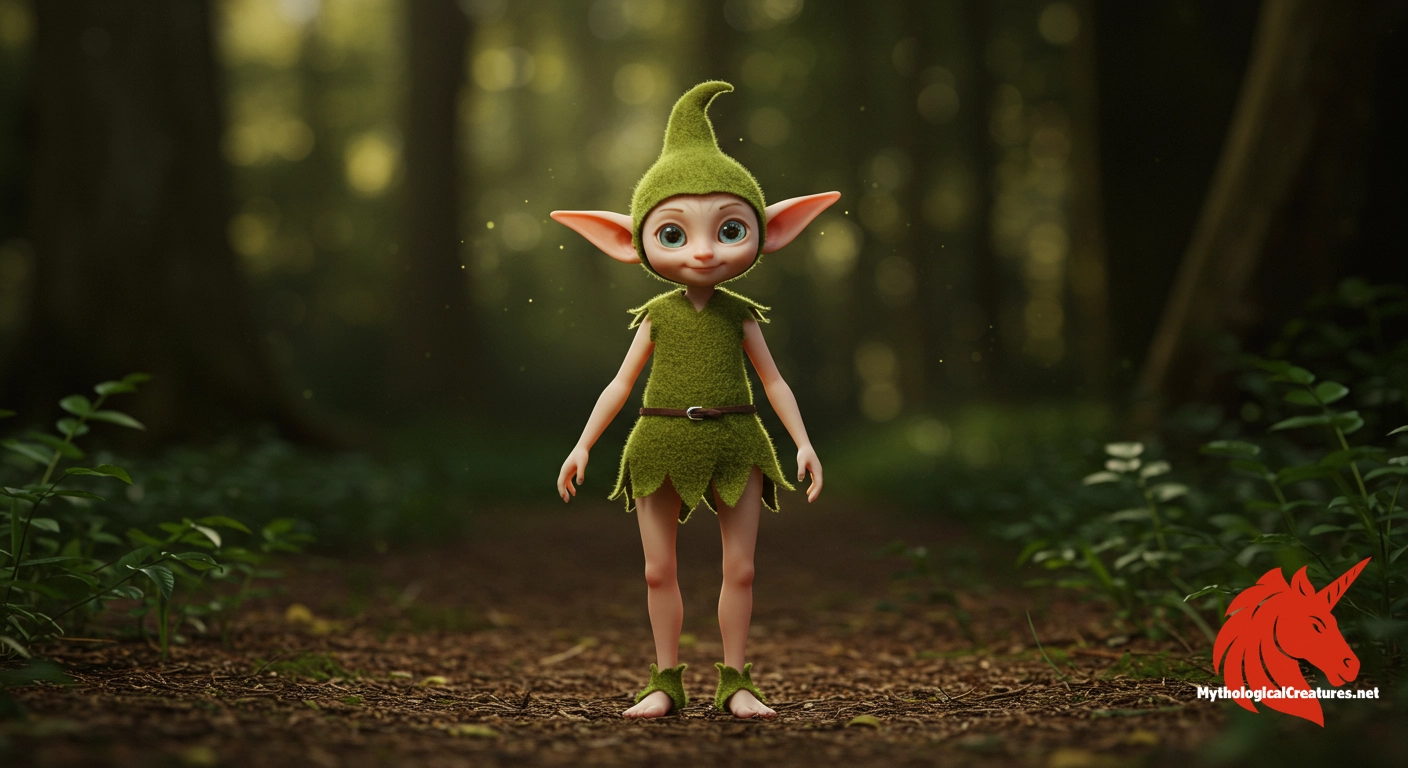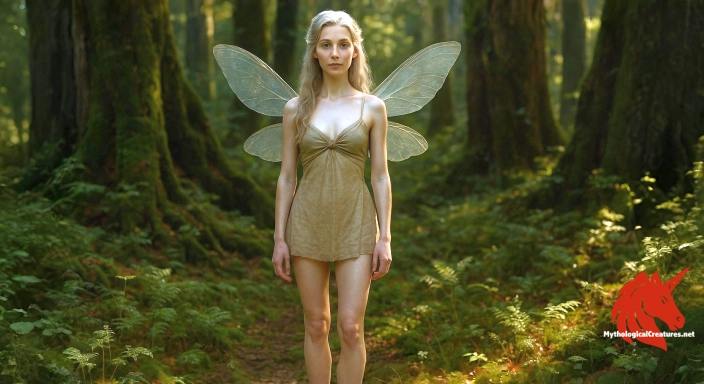Pixie: Pixies are small, mischievous fairies rooted in British folklore and particularly associated with the moorlands and ancient sites of Devon and Cornwall.

Pixie
Pixie - Pixies serve as an embodiment of the mysterious, magical spirit of the British landscape, symbolising both the delight and the capricious nature of ancient folklore.
Origins & First Encounters
The pixie is one of British folklore’s most captivating and enigmatic spirits, renowned for its playful mischief and elemental connection to the natural world. Emerging from the high moorlands of Devon and Cornwall, the creature’s roots are steeped in ancient Celtic traditions that celebrate nature’s mysteries. Its earliest mentions evoke a being both elusive and endearing, a resident of rugged landscapes and mystical stone circles that echo the echoes of antiquity. Communities long believed that these diminutive beings moved unseen among the ancient barrows, dolmens, and ringforts, imbuing the local terrain with an otherworldly charm. Through generations of oral tradition, the pixie became a symbol of both the benevolent and mischief-laden aspects of nature. Local lore often intertwines respect with a hint of trepidation, as encounters with the pixie were thought to herald both playful blessings and trickery. As these legends spread, the creature’s character evolved, balancing earthy popularity with an inscrutable, almost magical allure. Even today, the pixie endures as a reminder of Britain’s rich mythological legacy, inviting both admiration and a sense of mystery about the old ways of nature and spirit.
Source Texts & Tale Variants
Ancient accounts of the pixie primarily arise from a rich tapestry of oral traditions, cherished in the rural communities of Devon, Cornwall, and beyond. Over the centuries, enthusiastic storytellers and local chroniclers recorded a variety of narratives that painted the pixie as both a gentle guide and an impish mischief-maker. Archival manuscripts and folklore collections from the region preserve multiple versions of these tales, each recounting encounters in the twilight of ancient stone circles and mossy barrows. In several retellings, the creature appears as a whimsical guardian of sacred sites, while in others, it is a playful prankster whose antics challenge human expectations. Victorian literature later played a significant role in reshaping these narratives, embellishing details and standardising certain aspects of its attire and demeanour. Some sources recount elaborate night-time dances and spirited contests that underscore a sense of communal celebration of nature’s mysteries. The narrative variants not only highlight regional idiosyncrasies but also reveal a malleable character whose depiction was tailored by each storyteller’s imagination. These diverse sources have contributed to a layered mythos that continues to influence modern retellings and creative adaptations of the pixie legend. With each account adding a new facet to its persona, the pixie remains a dynamic and evolving symbol in folklore.
Form & Powers
The physical appearance of the pixie is a delightful mosaic of traditional and later romanticised imagery, blending ancient ruggedness with ethereal charm. Typically portrayed as a diminutive, almost childlike being, the pixie is imagined as scarcely taller than a small child, endowed with an agile and slender form. Distinctive features such as sharply pointed ears, bright, curious eyes, and sometimes an impish smile lend the creature an unmistakable, otherworldly presence. In early renditions, the pixie was depicted wearing tattered, humble garments that echoed its rustic origins in wild and unspoilt landscapes. Over time, however, Victorian influences introduced a more dapper image, with the pixie adorned in a neat green outfit complemented by a pointed hat, symbolising its playful connection to nature. There are also depictions where its eyes seem to glimmer with a hidden wisdom, suggesting a deep bond with the magical realms it inhabits. Variations in size and detail are common, with some accounts imbuing the creature with a light, almost fairy-like translucence, while others emphasise its earthy, grounded aspect. The evolving image—from ragged simplicity to an almost costume-like elegance—highlights the dual nature of the pixie as both a rustic spirit and a romanticised icon of fantasy lore. Each description, whether austere or elaborately refined, continues to enchant those who explore the rich visual traditions of this mythic being.
Regional Faces
Across Britain, the depiction of the pixie adapts to local flavours and beliefs, yielding a fascinating array of regional variations. In the moorlands of Devon and Cornwall, for example, the pixie is most often seen as a cheeky guardian, intimately tied to the ancient landscapes and stone circles that dot the area. In neighbouring counties like Dorset, Somerset, Sussex, Wiltshire, and Hampshire, the creature is known under a variety of names—pisky, pixy, and even pigsie—with nuanced differences in its mythos. Such regional adaptations often reflect the character of the local environment, with some communities emphasizing the pixie’s benevolent aspects while others highlight its capricious and trickster nature. The setting in which these creatures are encountered also shifts; in some tales, they are associated with misty woodlands or bubbling springs, while in others, ancient megalithic sites serve as their secret abodes. Local festivals and storytelling sessions often incorporate these regional nuances, celebrating the pixie as a symbol of nature’s enduring magic. Particularly in rural areas, the creature’s lore is interlaced with community identity, with each region offering its own unique narrative twists. Through these variations, the pixie becomes a versatile emblem, capable of resonating with diverse cultural traditions and environmental backdrops. Such regional richness ensures that the myth remains as alive and multifaceted as the landscapes that birthed it.
Cultural Parallels
The pixie shares intriguing similarities with a variety of other mythical beings, underscoring a common thread that runs through European folklore. Its playful and enigmatic nature is reminiscent of the Irish aos sí, whose presence also bridges the gap between the earthly and the supernatural. Like the Scottish fairies, the pixie embodies a dual character capable of bestowing both benevolence and perplexing trickery. In continental traditions, figures such as the French lutin or the German kobold mirror the pixie’s diminutive size and mischievous spirit, each artfully blending local culture with universal themes of nature and magic. These corresponding figures reinforce the idea that the concept of small, elusive, and often mischievous beings is widespread across many rural cultures. Comparative analysis reveals that while the linguistic and cultural labels may differ, the underlying archetype—a guardian of forgotten landscapes with a penchant for playful subversion—remains remarkably constant. Many of these creatures are celebrated in art and literature as embodiments of nature’s unpredictability and as calmants of the mundane. Their shared characteristics speak to a pan-European narrative about the mystical interplay between humans and the natural environment. This interconnected tapestry of mythologies highlights how the pixie is part of a broader tradition that celebrates transformation, mischief, and a deep-rooted respect for the land. Such parallels contribute to a cross-cultural legacy that enriches our understanding of folklore as a whole.
Legacy & Modern Evolution
The historical evolution of the pixie presents a fascinating journey from the mists of ancient myth to its status as a modern cultural icon. Early legends framed the creature as a rustic, natural spirit, one who wandered the primitive landscapes of Britain with a sense of wild, untamed energy. Over time, the narrative was reinterpreted, especially during the Victorian era, when a more polished and whimsical image took hold, complete with smart garments and a jaunty pointed hat. This romantic reinvention blended the raw charm of its earlier depictions with a sense of refined fantasy that delighted audiences then and continues to do so today. In contemporary culture, the pixie has transcended its folkloric origins to become a fixture in literature, film, and visual art, symbolising the enchanted interplay between nature and myth. Modern fantasy writers and artists often use the pixie as a metaphor for the unpredictable yet enchanting forces of the natural world. Its enduring image is equally at home in children’s tales as it is in sophisticated works of speculative fiction, proving its remarkable versatility. Even as scientific thought and modernisation have transformed our understanding of the world, the pixie persists as a reminder of the magic that lies beneath the surface of everyday life. This lasting legacy not only preserves the ancient myth but also reinvents it for new generations who continue to search for wonder in the natural world. Ultimately, the pixie stands as a vibrant testament to the power of folklore and the timeless human fascination with mystery and play.
Interesting Fact
An intriguing aspect of pixie lore is that they were traditionally known to abandon their tattered garments in exchange for gifts of new clothes, a practice that symbolised both transformation and the delicate interplay between the fae and the human world.
Quick Creature Info
Features:
Associations:
Our Mythic Legendary Rating:

Also Sometimes Known As:
Habitat:
Supernatural Powers:
Physical Attributes:
Abilities:
Behavior:
Lore:
References
Discover Another Mythical Legend You May Not Have Heard Of?
Uncover the mysteries of ancient folklore and expand your knowledge of legendary beings from cultures around the world.
Dare to Meet the Zână....
Mythical Disclaimer: The images and data on this site are derived from various historical and literary sources, but we have found that many myths often have multiple versions and interpretations across references, sometimes contradictory. As a result, these creature depictions are artistic interpretations—imaginative blends of folklore, legend, and a dash of AI guesswork. Because creature descriptions vary widely, our illustrations and accompanying information represent our best effort to honor mythology while bridging creative gaps. Enjoy these interpretations—just remember, we've done our best to respect the stories and validate available data, but in the realm of mythology, details often shift, imagination leads the way, and nothing is ever set in stone!
Curated by the Mythological Creatures Team (rev. May 2025)
